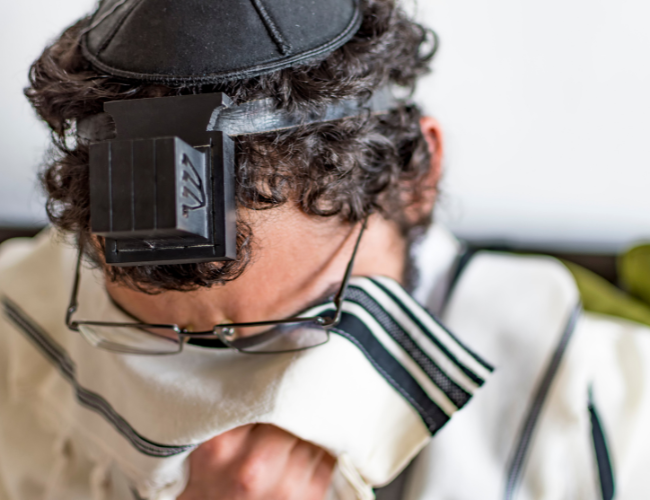The Shacharit prayer, one of the central daily prayers in Judaism, holds a special place in the hearts of Jewish worshippers. As the morning service, it marks the beginning of the day with a series of prayers, blessings, and readings from the Torah, setting a spiritual tone for the hours ahead.

Peer Hastam Kosher Tefillin
- Kosher Tefillin Peshutim from Israel, Hand written "Parshiot" by a Qualified Sofer Stam (Scribe)
- Free Tefillin Velvet Bag with Protective Plastic Bag
- This Tefillin set is the most basic level quality. Although the Parshiot parchments are hand written by a scribe, the Tefillin Peshutim do not come with a kosher certificate.
- Ashkenaz Version For Right Handed
What is Shacharit?
Shacharit (שחרית), derived from the Hebrew word “shachar” (שחר) meaning dawn, is the Jewish morning prayer service. It is the first of the three daily prayers, followed by Mincha (afternoon) and Maariv or Aravit prayer (evening). Shacharit encompasses a variety of prayers and rituals, including blessings, the Shema, the Amidah, and the Torah reading on certain days.
Components of Shacharit
The Shacharit service consists of several sections, each with its own significance:
- Morning Blessings (Birkot HaShachar): These blessings express gratitude for the basic functions and freedoms of daily life.
- Pesukei Dezimra: A series of psalms and prayers that praise God and prepare the worshipper for more intense prayer.
- Shema and Its Blessings: The Shema is a central declaration of the Jewish faith, affirming the oneness of God. It is surrounded by blessings that reflect themes of creation, revelation, and redemption.
- The Amidah: Also known as the Shmoneh Esrei, this is a central prayer consisting of 19 blessings, covering themes of praise, petition, and thanksgiving.
- Torah Reading: On Mondays, Thursdays, and Shabbat, the Torah is read as part of the Shacharit service.

How to Pray Shacharit
Praying Shacharit can be done individually or as part of a minyan (quorum of ten adult Jews), which is considered more ideal. Here is a step-by-step guide:
- Preparation: Begin with washing hands and reciting the appropriate blessing. Dress modestly and, if male, put on a tallit (prayer shawl) and tefillin (phylacteries).
- Morning Blessings: Recite the Birkot HaShachar, thanking God for the daily miracles and sustenance.
- Pesukei Dezimra: Chant or read the psalms and hymns that include sections like Ashrei, Halleluyah, and Nishmat.
- Shema and Its Blessings: Cover the eyes with the right hand while reciting the first verse of the Shema. Continue with the blessings that follow.
- Amidah: Stand facing Jerusalem and recite the Amidah quietly but audibly enough to hear yourself. This prayer is the centerpiece of the service.
- Conclusion: After the Amidah, additional prayers like Tachanun (supplications) and the Aleinu are recited. On certain days, the Torah reading is included.


Recommended Time for Shacharit
The ideal time for Shacharit is from dawn until the end of the fourth halachic hour of the day, which varies based on geographical location and the time of year. It is best to pray at sunrise (netz hachamah), but if that is not possible, anytime within the first third of the day is acceptable.
The shacharit morning prayer
Whether you are praying individually or with a community, this morning service offers a structured yet deeply personal avenue for expressing faith, gratitude, and supplication. Embracing the rituals and prayers of Shacharit can enhance daily life with a sense of purpose and serenity.
For those new to Shacharit, it may seem extensive, but over time, the prayers become a comforting and enriching part of the daily routine. Whether you are an experienced worshipper or a beginner, Shacharit invites you to start each day with a meaningful dialogue with god.
